From logic in India to living experience in China
When we embark on a study and practice of Buddhism, most of us start with the Buddha’s teachings, and, though these may sound somewhat unusual at first, with an open mind, we are soon able to make sense of them. But, when we try to go further, and explore the teachings of such teachers as Huineng, Dogen and Hakuin, then, we often feel lost. As Buddhism spread to China, something seems to have happened to the teachings that appears to have muddled their clarity. Scholars call it the sinification of Buddhism. Dharma teachers in China had to do a lot more than translate the sutras into Chinese. As Yuasa Yasuo puts it “when Buddhism entered China, the method [of thinking] that gives primary importance to logic was not accepted.”

Following the collapse of the School of Names and that of Mohism going back to the time of the Warring States, no logic has developed in China that could be compared to the logic we find in either Greece or India. As the minds of their disciples failed to resonate with the texts carried to China via the Silk Road, Buddhist teachers had to use a different approach. In Yuasa Yasuo’s words, they “used the standpoint of practical experience, that is, the theory of self-cultivation [shugyo] in lieu of logic.” In Zen Buddhism, “the individual and the world always dwell in holistic and unitive relations of oneness. The cognition of these unitive relations … is not through logic, but through a lived experience in the field of practical self-cultivation, that is, through intuitive knowing.”
What exactly is logic and how did it come about?
Those of us who live in either the West or a westernized culture use logic everyday without giving it much thought. For us it is what water is to fish. We do not even notice it. And we certainly would not contrast it with “living experience.” After all, the Buddha, using logic, did teach a path leading to what can only be described as a living experience, that of the realisation, not just an understanding, but an embodiment, of a new relation to the world, one that is free from suffering, and where we see “things as they are?” And this is why we often come to Buddhism in the first place: unlike Judaeo-Christian religions, Buddhism offers us a practice leading to a concrete embodiment, not a dogma which we are expected to believe.
The word “logic” derives from logos, a Greek word originally referring to the word of God, that is (divine) reason, and, in philosophy, the pre-existing rational order of the cosmos as expressed in words. In the wider sense used by Zen philosopher Nishida Kitaro, it is “the form of our thinking,” when we use words to describe the things we perceive with our senses, and the way we interpret how they relate to each other. Such thinking takes place at the level of our reflective (self-)consciousness, which provides us with representations of things seemingly existing outside ourselves.

Historically, a marked focus on reflective consciousness as the place of knowing is found among the Indo-Europeans who settled in both Europe and India in the 2nd and 1st millennia BCE. In Europe, this emphasis on reflective consciousness gave rise to Greek philosophy which, starting with Plato and Aristotle, understood ultimate reality in terms of Being. According to Plato, a suprasensory world exist – referred to as metaphysics – where Being reside in the Ideas, a set of Ideal Forms, in a pre-existing order which we, humans, strive to cognise. The things perceived by our senses were mere copies of these Ideal Forms. Aristotle later set out what is known as the “first principles,” that is, the three principles (or laws) of reason, namely, the principle of identity “A is A,” the principle of non-contradiction, “‘A is B’ and ‘A is not B’ are mutually exclusive,” and the principle of the excluded middle, “nothing can be both ‘A and B’.” These principles were to be used to work out how things relate to each other in the pre-existing rational order of the world.
The Chinese Dao is not a pre-existing order but a dynamic flow of life
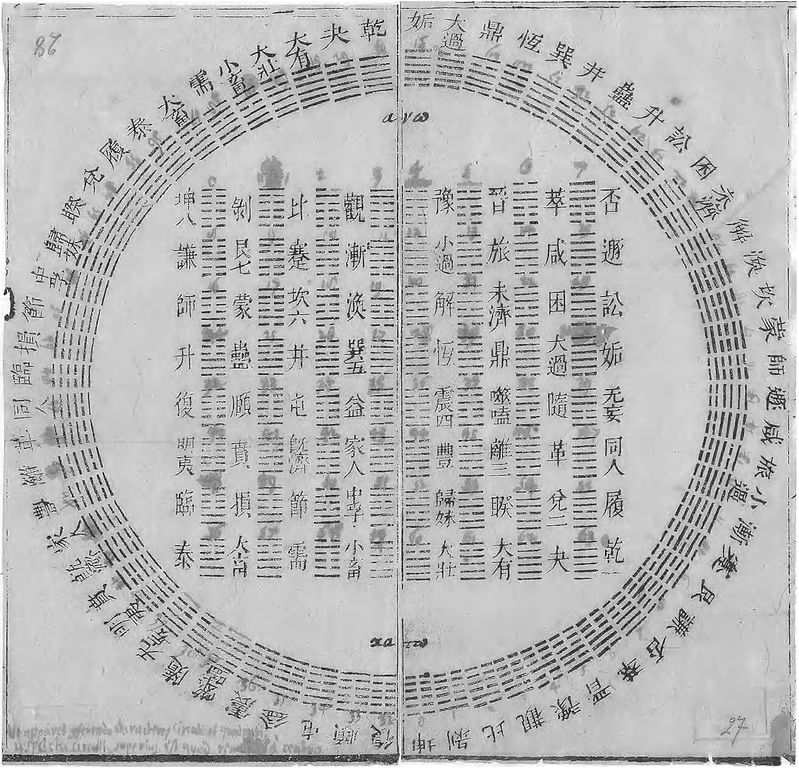
On the other hand, in China, ultimate reality was never seen as a static transcendental order for us to investigate. It was, instead, seen as a dynamic vortex called the Dao, at once an empty vessel compared to the womb of a mother, and a way, or path, taken to be a flow of energy giving forms to, and animating, the things we see. Our task then was not to understand a pre-existing order, but instead, to envision (“to divine”) the way the flow of energy was unfolding. China’s oldest book is the Yijing, a book of divination. To practice divination, we had to attune ourselves to the ever-flowing outpouring of life, and intuit the way it could evolve, if we remained stuck in our old habits of thinking and behaving. Such a task required self-cultivation based on the “heartmind (Chin xin, Jap kokoro), that is, using both the heart and the mind, combining empathy and clarity, in order to avoid ego-centred biases. This was a path that was turned inwards in an attempt at grasping life within oneself, since we, too, are part of the natural flow of life. We could feel within ourselves the interplay of yin and yang, and the qi-energy at work, and follow it in our interactions with the world, as the qi-energy regulating the yin-yang flow also took place in the wider world.
Ancient India shared features of both the logical West and the intuitive East
In a nutshell, we could say that the Buddha’s teachings originated from the same indigenous yoga-based cultural substratum as the alchemical lore found among Daoists in China, while being formulated in the language of an Indo-European culture foregrounding (substantive) Being in the same way as Greek philosophy.
Though the origins and identity of Indo-Europeans have caused virulent debates for years now, there is now a broad consensus among scholars that they represent a diverse group of “tribes” sharing a family of related languages, who migrated from an hypothetical location in the Caucasus, westwards to Europe, and eastwards to India. As they came in several waves over several centuries, it could be that some reached the Indian subcontinent before the collapse of the Indus Valley civilisation, but scholars agree that they did not destroy that civilisation. A severe drought did, causing the Saravasti river to dry out, and people to disperse to other parts of the subcontinent. One thing that is certain is that Indo-Europeans, or rather Indo-Aryans, first settled in the Punjab, and then spread to the Gangetic Plains, where they established the Brahmanical culture, based on the Vedas. This was the political situation that the Buddha encountered when he walked down from this birthplace near present-day Nepal to Bodh Gaya where he attained enlightenment. During his quest, he had shared the life of the sramanic community living outside villages. There he had listened to teachings based on yoga-based alchemic practices inherited from the Indus Valley civilisation, which itself had been influenced by Babylonian culture with which it had commercial ties. Seals recovered from the Indus cities of Harappa and Mohenjo-Daro show scenes that can be linked with Indian mythology, in particular yogi-like figures sitting in asana positions still used today.
It is then fair to say that the Buddha belonged to the two worlds. He shared the native inward-looking orientation characteristic of Asia, and was taught a set of practices focusing on self-transformation comparable to that of Daoist immortals in China. But as he taught disciples that had been immersed in Brahmanical culture, he had to use a language reflecting the taste for abstraction of that culture which, like that of the Greeks, saw reality in terms of Being. The language the Buddha had to use when teaching was Magadhi which, like Pali, was related to Sanskrit, an Indo-European language. The Buddha, as well as his disciples throughout the centuries of Buddhist philosophy in India – figures such as Nagarjuna, Candrakirti, Asanga and Vasubandhu, all taught using logic, even though the path of practice they described was meant to lead practitioners beyond (or rather below) reflective consciousness to reach out to a deeper underlying primary consciousness, precisely that which the Chinese conceived as the Dao.
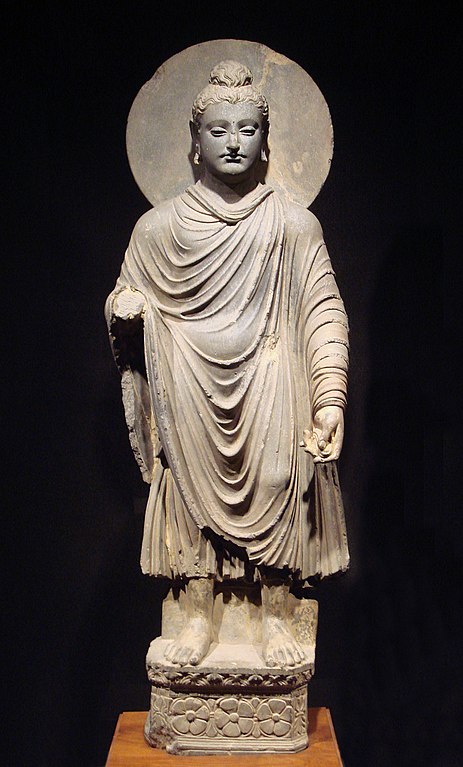
Concerning the use of logic in Indian Buddhism, I would note that there is currently a strong interest in academic research on the impact of the Greek presence in India following Alexander the Great’s expedition that reached the Indus Valley in 325 BCE. A number of Indo-Greek states were founded where Greek philosophy came into direct contact with Buddhist teachings. A well-known text – The Questions of King Milinda/Menander – stands as evidence of such interaction. There is a particular focus on Gandhara, where the first representations of the Buddha were created, following an Hellenistic style, and where were recently discovered the oldest Buddhist manuscripts ever found, written in Gandhari, a language now being deciphered by a group of scholars as they work on a translation of the texts. A number of books are hinting at an influence of Greek thinking on the many schools of Buddhist philosophy that produced the sutras.
Such historical circumstances account for the Buddha’s use of logic, as his thematisation of being (even if only to deny it as “intrinsic being”), in his teachings. In addition, however, a deliberate choice to restrict his borrowing from the vast alchemic lore of yoga to a few meditation techniques, leaving aside such advanced techniques as kundalini yoga to control the flow of prana-energy, the Indian name for qi-energy, deprived the Buddha of an opportunity to describe ultimate reality as a dynamic vortex, as Chinese Daoism did. The notion of a flow of energy circulating through all things was widely shared among pre-literate traditional societies worldwide. Practices aiming at controlling this energy, had led a large number of wandering sramanas to display their special powers (siddhis), and that, for the Buddha was an undesirable corruption of yoga. He explicitly forbade his disciples to indulge in the quest for these special powers. The Buddha sought to teach a path of practice leading to the liberation of all beings. This revolutionary reorientation of ancient practices required that he distanced himself from the very notion of special powers. So, when Indian Buddhism collapsed around the end of the 12th century, prana-energy lost the centrality qi-energy continued to enjoy in China.
East and West: two paradigms based on radically different languages
In Overcoming Modernity – Synchronicity and Image-Thinking, a collection of essays focusing on parallels between East and West, ancient and contemporary, in philosophy as well as in recent developments in science, in particular Jung, and modern physicists, Yuasa Yasuo devotes a few pages on the historical origins of the contrasting modes of thinking, which formed the backdrop against which Buddhist teachers elaborated their teachings in India and China. He viewed his analysis of these origins as a confirmation of the Sapir-Whorf hypothesis that “language defines culture.” One could add, though, that language itself is shaped by socio-economic conditions.

Though writing, wherever it appeared, originally used pictographs, a phonetic writing system first appeared in the Mediterranean world of the Phoenicians, a nation of merchants and seafarers that interacted with Egypt, Mesopotamia and Greece. A phonetic writing system allowed them to communicate with people speaking a variety of languages. The Phoenician alphabet served as a model for the Greek alphabet, and the later Latin alphabet. Yuasa describes phonetic languages as “vocal languages” relying on auditory perception, in contrast to “written languages” relying on images appealing to visual perception, of which the Chinese language is an example.
Yuasa explains that in a phonetic language, “the phonemes or syllables that make up sounds, if individually separated, have no meaning whatsoever. Because sounds are different from drawings or figures, they have no relation at all with objects … a word is nothing but a mere sign for the purpose of designation.” Thus abstracted from the concrete objects they represent, the words have to be explicitly organised into a meaning: this is the role played by syntax. Yuasa holds that syntax was the precursor of logic, as it presents a world already arranged into a set of relationships.
“On the other hand, in the method of expression of the traditional Chinese language that gives primacy to visual perception, every character = word = sound already expresses a definite, concrete meaning and content.” Because the pictographic representation retains the link with a concrete object, the Chinese language does not need to create an explicit connection between ideograms. Therefore, in Nishi Junzo’s words, quoted by Yuasa, in Chinese, “something corresponding to syntax is originally lacking.” The Chinese language does not have a grammatical subject, or verb tenses, or noun declensions. A word can be a noun, a verb or an adjective. “Individual words only float on the surface of meaning/thing-events, and their mutual synthetic connection is not shown in the words as linguistic expressions.” It could be said that there is something incomplete, that has to be completed by a return to the concrete world. “Expressions are gathered together into one [whole] by something other than the language … A unity of meaning occurs in the back of the language.”
This is where intuition comes into play. A “return” to the concrete world of experience takes place during which the heartmind teases out a meaning that includes “an affective character, or rather, to be accurate, a life-bearing character.” As ideograms are images, one needs to read the text the way one would read poetry. Yuasa coined the word “image-thinking” to designate the Chinese mode of thinking.
We can now better understand why the Chinese struggled to make sense the Indian Buddhist sutras!
In China practical experience is used in lieu of logic
Yuasa says that “it was the 3rd patriarch of the Tendai (Chin Tiantai) School, Zhiyi, (538-597) who laid the foundation for the Sinification of Buddhism. In order to grasp the meaning of “form is emptiness,” Zhiyi used the standpoint of practical experience, that is, the theory of self-cultivation [shugyo] in lieu of logic.” Though it traced its lineage back to Nagarjuna, the Tiantai school was the first Buddhist school in China that was entirely of Chinese origin. Like Bodhidharma, the semi-legendary founder of the Zen school, it was founded in the 6th century, and is said to have influenced Zen.
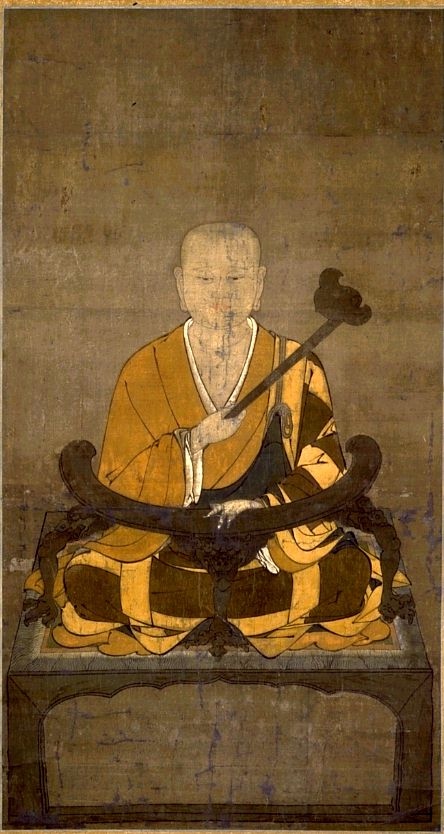
Following Zhiyi’s teaching, the Tientai school taught sankan, a triple meditation, in which emptiness is entered “from the world of the provisional” that is, from the world of phenomena without trying to empty consciousness of thoughts, or alter it in any way, to cognise “through lived experience, the transcendent dimension that goes beyond the sensible world,” after which “the embodied subject, who has experienced emptiness, returns to the world of form … While in Nagarjuna’s theory, primacy is placed in distinguishing [and overcoming] the two dimensions of form and emptiness through logic, Zhiyi places primary importance in the fact that through the route of practical experience two dimensions come to be united as one, despite the fact that these two dimensions are separate.”
It is not difficult to see here the emergence of what became, with Zen, a “pointing directly to one’s mind” as “it lets one see into one’s own true nature and thus attain Buddhahood.”
Meditation had, of course, been practiced by the Buddha himself, and taught to monks in both the Theravada and Mahayana schools in India. Then, it was seen as a method used to reach higher forms of consciousness (jhana meditation), to calm the mind (samatha) or to gain an insight (vipassana) into the “the three marks of existence” (impermanence, suffering and no inherently existing self). In other words, it had a goal. In Tiantai and even more in Zen, meditation is simply an observation of how the ordinary mind naturally works, there is no attempt at altering one’s consciousness. Or rather, just seeing how consciousness actually works provides a reconnection with the underlying primary sub-conscious layer of consciousness ordinarily concealed by reflective (self-) consciousness, which we use in our everyday lives. And that, as such, is awakening to our true nature.
In the Platform Sutra, the text that launched the Zen school in the 8th century, Huineng insists that he “didn’t receive any instructions” from his teacher, the Fifth Patriarch: “The only thing he talked about was seeing our nature.” He even goes further and states that even sitting is not recommended: “One Practice Samadhi means at all times, whether walking, standing, sitting, or lying down, always practicing with a straightforward [honest, sincere] mind” (Ch. 14).
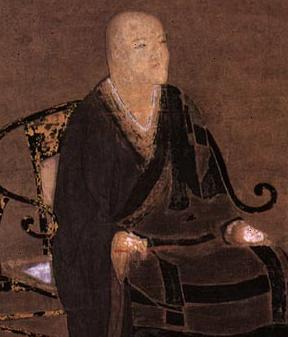
In 13th century Japan, Dogen founded the Zen Soto School on the practice of shikantaza, “just sitting” which, though reintroducing the sitting position, goes closest to the principle of non-interference with the natural working of the mind, which monks are expected to maintain throughout their daily schedule of activities. Shohaku Okumura, a contemporary Soto Zen teacher describes just sitting as follows: “Just as the function of a thyroid gland is to secrete hormones, the function of a brain is to secrete thoughts, so thoughts well up in the mind moment by moment. Yet our practice in zazen is to refrain from doing anything with these thoughts; we just let everything come up freely and we let everything go freely. We don’t grasp anything; we don’t try to control anything. We just sit.”
In addition, “arts” were developed as ways (do in Japan) or disciplines involving a self-cultivating practice. Already in China, the name of Bodhidharma is associated with the Shaolin Temple where kung-fu was taught. Other “arts” developed in China and, later, in Japan, the best known being landscape gardening, calligraphy, ink drawings and colorful paintings of mountainous landscapes, the tea ceremony, flower arrangement, pottery, poetry and the art of archery.
This new experiential route to awakening allowed Buddhism to lose some of the other-wordliness it had in India where phenomenal life is almost exclusively described in negative terms. In contrast to this negative approach to phenomena, nothing is more positive than the vision of the cosmos found in the image of Indra’s Net, as described in the Chinese Huayan school to illustrate its expanded view of co-dependent origination into the “mutual identity and interpenetration of all phenomena.” There, hanging from a net, glittering jewels infinite in number, reflect all the other jewels, infinite in number, ad infinitum. In the words of Francis H. Cook, the Huayan universe is one “in which phenomena have been not only restored to a measure of respectability, but indeed have become important, valuable, and lovely” (quoted by Jin Y Park).
A synthesis of experience and logic has been attempted by the Kyoto School of Philosophy
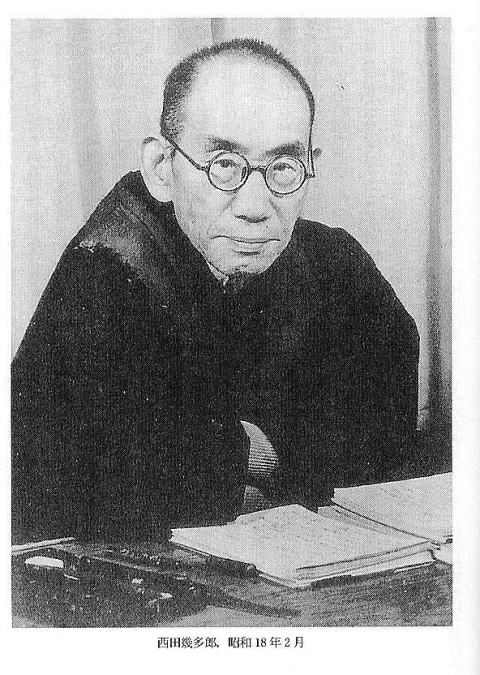
In the 20th century, a return to the use of logic has been proposed by the thinkers of the Kyoto School of Philosophy, led by Nishida Kitaro, who combined a practical training in Zen and an academic training in Western philosophy. Though using words borrowed from Western philosophy, Nishida dramatically altered Aristotelian logic, when describing reality as the “self-identity of absolute contradictories,” often shortened to “self-contradictory identity,” or even “unity of opposites.” I would not say that he completely jettisons the principles of non-contradiction and excluded middle. It is more subtle than that. It is, in fact, a reformulation of the logic of soku, found in the Diamond Sutra: “This is not fire, therefore it is fire.” A is A; A is not-A; therefore A is A. Nishida’s thought requires a lot more space than I have here, but if you are interested, you can have a look at the following website, which covers both Nishida’s thought, and that of two of his disciples, Nishitani Keiji and Ueda Shizuteru.
https://thekyotoschoolofphilosophy.wordpress.com/
Sources
Yuasa Yasuo – Overcoming Modernity – Synchronicity and Image-Thinking (2008)
Red Pine (Bill Porter) – The Platform Sutra – The Zen Teaching of Hui-neng (2006)
Jin Y. Park- Buddhism and Postmodernity – Zen, Huayan, and the Possibility of Buddhist Postmodern Ethics (2008)
Shohaku Okumura – Realizing Genjokoan, The Key to Dogen’s Shobogenzo (2010)
Red Pine (Bill Porter) – The Diamond Sutra – Texts and Commentaries translated from Sanskrit and Chinese (2001)
